1. Art School Orgy by Stewart Home
Originally started as an exercise in style for a creative writing course he was teaching, Art School Orgy is written in Home's jaunty fashion but with the subject matter being the most depraved acts imaginable. Intense start to the reading year!
Originally started as an exercise in style for a creative writing course he was teaching, Art School Orgy is written in Home's jaunty fashion but with the subject matter being the most depraved acts imaginable. Intense start to the reading year!

2. The Electric Kool-Aid Acid Test by Tom Wolfe
I remember seeing this in the cult classics section of HMV and Fopp, as if it were celebrating alt lifestyles. Read between the lines, though, and it is a sharp critique of the freaks, while still remaining loyal to Ken Kesey.
I remember seeing this in the cult classics section of HMV and Fopp, as if it were celebrating alt lifestyles. Read between the lines, though, and it is a sharp critique of the freaks, while still remaining loyal to Ken Kesey.

3. Atomic Habits by James Clear
Human beings are like dogs. We can be trained into good behaviour through rewards and punishments. I quite like the humility of this book, which prefers being 1% better to radical self-transformation.
Human beings are like dogs. We can be trained into good behaviour through rewards and punishments. I quite like the humility of this book, which prefers being 1% better to radical self-transformation.

4. The Lonely Planet Guide to Experimental Travel by Joël Henry and Rachael Antony
Published (2005) at the height of the fashion for psychogeography this is a beautiful artifact of the era with lots of dada ideas for exploring the world.
Published (2005) at the height of the fashion for psychogeography this is a beautiful artifact of the era with lots of dada ideas for exploring the world.

5. The 15-Minute City by Natalie Whittle
There are two types of short book: extended essays and condensed books. This is very much the latter and provides a lot to chew on for urbanists. It is by no means all positive, but well worth reading now the @wef is promoting the idea.
There are two types of short book: extended essays and condensed books. This is very much the latter and provides a lot to chew on for urbanists. It is by no means all positive, but well worth reading now the @wef is promoting the idea.

6. The Nature of Photographs by Stephen Shore
Short, stubborn fragments of text with pictorial examples that tries to get the reader to slow down and perceive the different levels on which a photograph operates.
Short, stubborn fragments of text with pictorial examples that tries to get the reader to slow down and perceive the different levels on which a photograph operates.

7. The Ones Who Walk Away from Omelas by Ursula K. Le Guin
I heard about this short story when FTX blew up and it was mentioned on Caroline Ellison’s Tumblr. It can be read as an indictment of utilitarians and the repugnant conclusion, but it is a lot more subtle and troubling.
I heard about this short story when FTX blew up and it was mentioned on Caroline Ellison’s Tumblr. It can be read as an indictment of utilitarians and the repugnant conclusion, but it is a lot more subtle and troubling.

8. Hooking Up by Tom Wolfe
I devoured this collection of waspish essays documenting American excess. Wolfe is such a confident satirist that some think him snarky, but you can sense the substantial research behind it all.
I devoured this collection of waspish essays documenting American excess. Wolfe is such a confident satirist that some think him snarky, but you can sense the substantial research behind it all.

9. Susan Sontag: The Complete Rolling Stone Interview by Jonathan Cott
My literary education came from reading @parisreview interviews. I love the casual references that get dropped in such conversations. After reading Olivia Laing's Everybody it was great to go to the source.
My literary education came from reading @parisreview interviews. I love the casual references that get dropped in such conversations. After reading Olivia Laing's Everybody it was great to go to the source.

10. From Bauhaus to Our House by Tom Wolfe
Punctures the modernist bubble in typical witty fashion. The Tartaria conspiracy theory suggests there was mudflood that destroyed the skills to create ornament. Wolfe shows that ego and ideology were the real causes.
Punctures the modernist bubble in typical witty fashion. The Tartaria conspiracy theory suggests there was mudflood that destroyed the skills to create ornament. Wolfe shows that ego and ideology were the real causes.

11. The Last Interview and other Conversations by James Baldwin
Picked this up at the library at the same time that I got the Susan Sontag interview. It is amazing to read him talking in his pomp, rejecting America's rejection, then on his death-bed full of wisdom and insight.
Picked this up at the library at the same time that I got the Susan Sontag interview. It is amazing to read him talking in his pomp, rejecting America's rejection, then on his death-bed full of wisdom and insight.

12. The Case Against the Sexual Revolution by Louise Perry
Curious to read this after listening to her talk with @ChrisWillx. She brings an array of troubling data about women’s experience in the age of porn and hookup culture. Conclusions are not for all, but worth debating.
Curious to read this after listening to her talk with @ChrisWillx. She brings an array of troubling data about women’s experience in the age of porn and hookup culture. Conclusions are not for all, but worth debating.

13. The Photographer’s Eye by John Szarkowski
Re-read this because I will hopefully be discussing it in April at @5thngs, an inspiring morning event where people talk about their favourite nonfiction books.
Re-read this because I will hopefully be discussing it in April at @5thngs, an inspiring morning event where people talk about their favourite nonfiction books.

14. Everybody by Olivia Laing
Skimmed this before her @UofGWriting talk and wanted to revisit after reading Louise Perry. They are fairly in sync, particularly about Dworkin. But Laing is brilliant at telling the best stories about Wilhelm Reich, Ana Mendieta, and much more.
Skimmed this before her @UofGWriting talk and wanted to revisit after reading Louise Perry. They are fairly in sync, particularly about Dworkin. But Laing is brilliant at telling the best stories about Wilhelm Reich, Ana Mendieta, and much more.

15. How to Blow Up a Pipeline by Andreas Malm
Malm makes a strong case that the strategic pacificism of XR is not enough. He destroys the pessimism of Franzen et al. But the vandalism he advocates doesn't prefigure a different world, nor does it seem to change minds.
Malm makes a strong case that the strategic pacificism of XR is not enough. He destroys the pessimism of Franzen et al. But the vandalism he advocates doesn't prefigure a different world, nor does it seem to change minds.

16. The Twits by Roald Dahl
This was my favourite of Dahl's books as a child. I particularly appreciated the pranking that Mr and Mrs Twit do to each other. Reading it back now is grim and sordid, but still strangely pleasurable.
This was my favourite of Dahl's books as a child. I particularly appreciated the pranking that Mr and Mrs Twit do to each other. Reading it back now is grim and sordid, but still strangely pleasurable.

17. Ah, Sweet Mystery of Life by Roald Dahl
A minor set of pastoral short stories inhabited, like all Dahl's works for young or old, by venal and cruel characters.
A minor set of pastoral short stories inhabited, like all Dahl's works for young or old, by venal and cruel characters.

18. Bronze Age Mindset by Bronze Age Pervert
Is this our era’s Lolita (@annakhachiyan) or its Mein Kampf (@lionel_trolling)? If you can decouple the deranged poetry from the dangerous political project, there is a lot to enjoy but it’s not for the faint of heart.
Is this our era’s Lolita (@annakhachiyan) or its Mein Kampf (@lionel_trolling)? If you can decouple the deranged poetry from the dangerous political project, there is a lot to enjoy but it’s not for the faint of heart.

19. The Book of Frank by CAConrad
Read out loud in full at French Street in Dalmarnock, this book of poetry is a sordid, savage, tender AIDS memoire to a lost forgotten time.
Read out loud in full at French Street in Dalmarnock, this book of poetry is a sordid, savage, tender AIDS memoire to a lost forgotten time.

20. Eumeswil by Ernst Jünger
The anarch is to the anarchist what the monarch is to the monarchist. This odd patchwork novel is full of lucid moments, but, as Dr Johnson said of Paradise Lost, no one wishes it longer.
The anarch is to the anarchist what the monarch is to the monarchist. This odd patchwork novel is full of lucid moments, but, as Dr Johnson said of Paradise Lost, no one wishes it longer.

21. Sun & Steel by Yukio Mishima
I’d previously listened to an audiobook of this—in the gym!—but it deserves to be read. It is fascinating to reflect on the extent to which the state of the body contributes to the thoughts we have.
I’d previously listened to an audiobook of this—in the gym!—but it deserves to be read. It is fascinating to reflect on the extent to which the state of the body contributes to the thoughts we have.

22. The Way of the Superior Man by David Deida
This book is three parts @EckhartTolle to one part @alpharivelino. It is full of spiritual talk of energies and connections, but not without psychological insight.
This book is three parts @EckhartTolle to one part @alpharivelino. It is full of spiritual talk of energies and connections, but not without psychological insight.

23. Exercises for Rebel Artists by Guillermo Gomez-Pena and Roberto Sifuentes
I had wanted to read this before @pochanostra appears at @GlasgowBuzzcut this weekend and I'm so glad I did. In it, utopian politics are grounded in the body and the experience of performing a life.
I had wanted to read this before @pochanostra appears at @GlasgowBuzzcut this weekend and I'm so glad I did. In it, utopian politics are grounded in the body and the experience of performing a life.

24. The Night Tent by Landis Blair
This picture book is designed for frightened children who can’t sleep. I can’t attest to whether it helps in that regard, but the crosshatched illustrations are magical and affecting whatever the age.
This picture book is designed for frightened children who can’t sleep. I can’t attest to whether it helps in that regard, but the crosshatched illustrations are magical and affecting whatever the age.

25. Matilda by Ronald Dahl
I vaguely remember this being published and feeling that I was too old for Dahl. It starts with one kind of wish fulfilment and ends with another. The brutality of Dahl’s schooldays feel like from a totally different era.
I vaguely remember this being published and feeling that I was too old for Dahl. It starts with one kind of wish fulfilment and ends with another. The brutality of Dahl’s schooldays feel like from a totally different era.

26. Symposium by Xenophon
Lighthearted discussion of beauty, friendship and love with some acrobatics and jestering thrown in. Mainly of interest for some nice details of Greek life.
Lighthearted discussion of beauty, friendship and love with some acrobatics and jestering thrown in. Mainly of interest for some nice details of Greek life.

27. Anti-Time Management by Richie Norton
Oliver Burkeman mentioned this in his soothing newsletter the other day and I thought it might be worth a look. It wasn't. Full of schmaltz, diagrams, and banalities.
Oliver Burkeman mentioned this in his soothing newsletter the other day and I thought it might be worth a look. It wasn't. Full of schmaltz, diagrams, and banalities.

28. The Symposium by Plato
I was thinking about the fictional Aristophanes' idea that humans were split in two by the gods and that love is a literal search for their other half, and wanted to reread this. The rest is propaganda for Socrates, though the Diotima framing is great.
I was thinking about the fictional Aristophanes' idea that humans were split in two by the gods and that love is a literal search for their other half, and wanted to reread this. The rest is propaganda for Socrates, though the Diotima framing is great.

29. Eat that frog! by Brian Tracy
I remember this as being a cheesy-but-effective antidote to procrastination. I now think it is pretty similar in message to more sophisticated books like Oliver Burkeman’s. It all comes down to finitude.
I remember this as being a cheesy-but-effective antidote to procrastination. I now think it is pretty similar in message to more sophisticated books like Oliver Burkeman’s. It all comes down to finitude.

30. Avant-Garde Art in Everyday Life edited by Matthew S. Witkovsky
Based on a donation of posters and magazines this is a fascinating survey of 6 canonical modernist designers: Heartfield, Klutsis, Lissitzky, Sutnar, Teige & Zwart. So much energy for modernity.
Based on a donation of posters and magazines this is a fascinating survey of 6 canonical modernist designers: Heartfield, Klutsis, Lissitzky, Sutnar, Teige & Zwart. So much energy for modernity.

31. Mussolini’s Grandchildren by David Broder
Jacobin’s Europe editor plunges the reader into the rapids of the Italian far-right but you emerge with a bracing sense of populism’s direction. All too relevant in the week of the national conservatism conference.
Jacobin’s Europe editor plunges the reader into the rapids of the Italian far-right but you emerge with a bracing sense of populism’s direction. All too relevant in the week of the national conservatism conference.

32. The Moon is a Harsh Mistress by Robert A Heinlein
I am a big fan of the SF Masterworks series and picked this out at random. It starts with some extremely prescient writing about ‘neural nets’ and a conscious AI but the lunar revolution stuff is so drab I lost interest.
I am a big fan of the SF Masterworks series and picked this out at random. It starts with some extremely prescient writing about ‘neural nets’ and a conscious AI but the lunar revolution stuff is so drab I lost interest.

33. Who does not envy with us is against us by Maria Fusco
Will be reviewing this for the recently revived @GlasgowRevBooks. Happily, short as it is, there is lots to say about it!
Will be reviewing this for the recently revived @GlasgowRevBooks. Happily, short as it is, there is lots to say about it!

34. The War Against Cliché by Martin Amis
When Amis died, I went to this collection of reviews, which makes me laugh out loud virtually every page. Superb collection.
When Amis died, I went to this collection of reviews, which makes me laugh out loud virtually every page. Superb collection.

35. Porn: An Oral History by Polly Barton
I'm really glad I didn't have online porn or "sex positivity" discourse when I was young. Barton tries to be a good progressive feminist but the mask keeps slipping because of the grossness of the tubes. A bit repetitive.
I'm really glad I didn't have online porn or "sex positivity" discourse when I was young. Barton tries to be a good progressive feminist but the mask keeps slipping because of the grossness of the tubes. A bit repetitive.

36. The Last Days of Roger Federer by Geoff Dyer
It’s Dyer's 65th birthday today. Happy birthday, Geoff! Like Olivia Laing, Dyer brimming with great references & would be a perfect dinner guest. This book goes from the sublime to the meandering. But when it's good, it's superb.
It’s Dyer's 65th birthday today. Happy birthday, Geoff! Like Olivia Laing, Dyer brimming with great references & would be a perfect dinner guest. This book goes from the sublime to the meandering. But when it's good, it's superb.

37. Acedia by Ewan Morrison
Ewan kindly sent a proof of this as-yet-unpublished meditation on recovering from chronic fatigue. It clarifies our chat from last year - - plus insights into psychosoma & neurasthenia, as well as beautiful photomontages. neilscott.substack.com/p/interview-wi…

Ewan kindly sent a proof of this as-yet-unpublished meditation on recovering from chronic fatigue. It clarifies our chat from last year - - plus insights into psychosoma & neurasthenia, as well as beautiful photomontages. neilscott.substack.com/p/interview-wi…

38. Bonfire of the Brands by Neil Boorman
Bought a cheap paperback of this to read in the sauna and test my theory that he is a Zelig of our time. I worried it was going to be one of those jokey self-experiment books, but the 2nd half has reflections on Marcuse and asceticism.
Bought a cheap paperback of this to read in the sauna and test my theory that he is a Zelig of our time. I worried it was going to be one of those jokey self-experiment books, but the 2nd half has reflections on Marcuse and asceticism.

39. Bel-Ami by Guy de Maupassant
Compelling novel about the rise of a poor ex-solider to the heights of Parisian society. Duroy is a charming rogue and it was a delight to read.
Compelling novel about the rise of a poor ex-solider to the heights of Parisian society. Duroy is a charming rogue and it was a delight to read.

40. All Desire is a Desire for Being by René Girard
Girard is a singular thinker whose influence has been steadily growing thanks to the efforts of people like @chaven, @lukeburgis, & @g_shullenberger. This miscellany conveys his central idea along with some surprising insights.
Girard is a singular thinker whose influence has been steadily growing thanks to the efforts of people like @chaven, @lukeburgis, & @g_shullenberger. This miscellany conveys his central idea along with some surprising insights.

41. Always Open Always Closed by Caitlin Merrett King
Metamodernist meditations on art and the art world. Full review soon!
Metamodernist meditations on art and the art world. Full review soon!

42. But What If We're Wrong? by Chuck Klosterman
Journalistic essays on how we think about the future. Bullish on science, perceptive on culture, it provides a lot to chew on.
Journalistic essays on how we think about the future. Bullish on science, perceptive on culture, it provides a lot to chew on.

43. Uncommon Places by Stephen Shore
Mundane in isolation, these pioneering colour photographs of 1970s America are sublime as a collection. Motels, diners, sunshine, urban life, people but mainly a vibe.
Mundane in isolation, these pioneering colour photographs of 1970s America are sublime as a collection. Motels, diners, sunshine, urban life, people but mainly a vibe.

44. Mrs S by K Patrick
Strangely liquid prose despite being written in a short, staccato present tense with minimal punctuation. Patrick’s debut slows the reader down to appreciate the lubricious lesbian longings.
Strangely liquid prose despite being written in a short, staccato present tense with minimal punctuation. Patrick’s debut slows the reader down to appreciate the lubricious lesbian longings.

45. Detail in Typography by Jost Hochuli
A microbook on microtypography. Phenomenal. Makes one appreciate the subtle effects of letter forms, line lengths, and more on the reader. Full of apt quotes set in different type variants.
A microbook on microtypography. Phenomenal. Makes one appreciate the subtle effects of letter forms, line lengths, and more on the reader. Full of apt quotes set in different type variants.
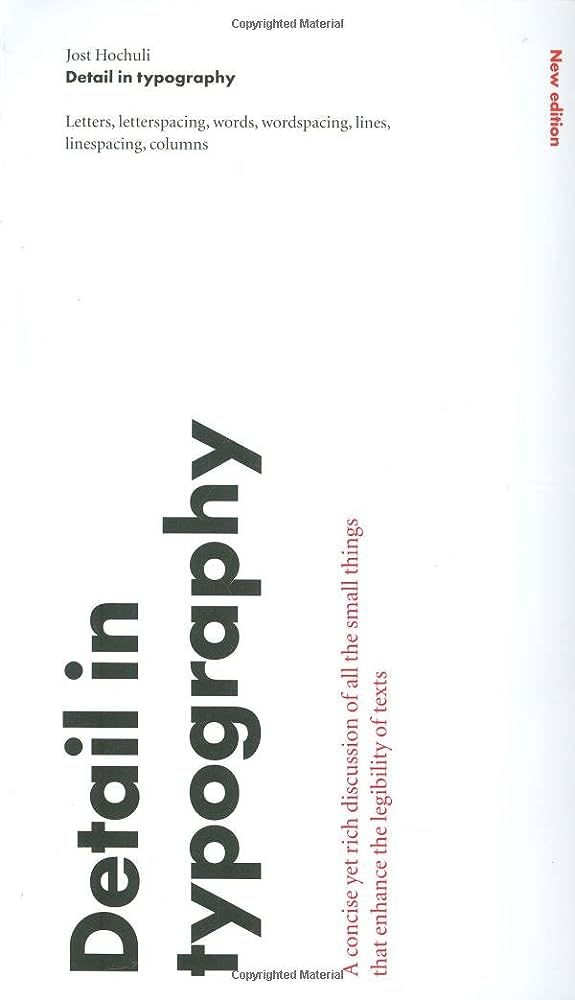
46. The Wanting Seed by Anthony Burgess
Published the same year as A Clockwork Orange, this is a British Soylent Green and feels out of time. Burgess sees politics and history as an eternal cycle of liberal and conservative. 2nd half similar to Tevis’s Mockingbird. Prescient.
Published the same year as A Clockwork Orange, this is a British Soylent Green and feels out of time. Burgess sees politics and history as an eternal cycle of liberal and conservative. 2nd half similar to Tevis’s Mockingbird. Prescient.

47. Fathers and Sons by Ivan Turgenev
I hadn’t realised this was published before the other great Russian novels and it is even more impressive as a result. Like Tolstoy, it deals with the question of Russia through two generations. Bazarov is such a wild character.
I hadn’t realised this was published before the other great Russian novels and it is even more impressive as a result. Like Tolstoy, it deals with the question of Russia through two generations. Bazarov is such a wild character.

48. Tools for Conviviality by Ivan Illich
The Localist’s choice for my book club, this often reads like Ted K. It is confident in the breakdown of industrial society, fearful of birthrates — a very 70s book! The vision of health and education is worth embracing though.
The Localist’s choice for my book club, this often reads like Ted K. It is confident in the breakdown of industrial society, fearful of birthrates — a very 70s book! The vision of health and education is worth embracing though.
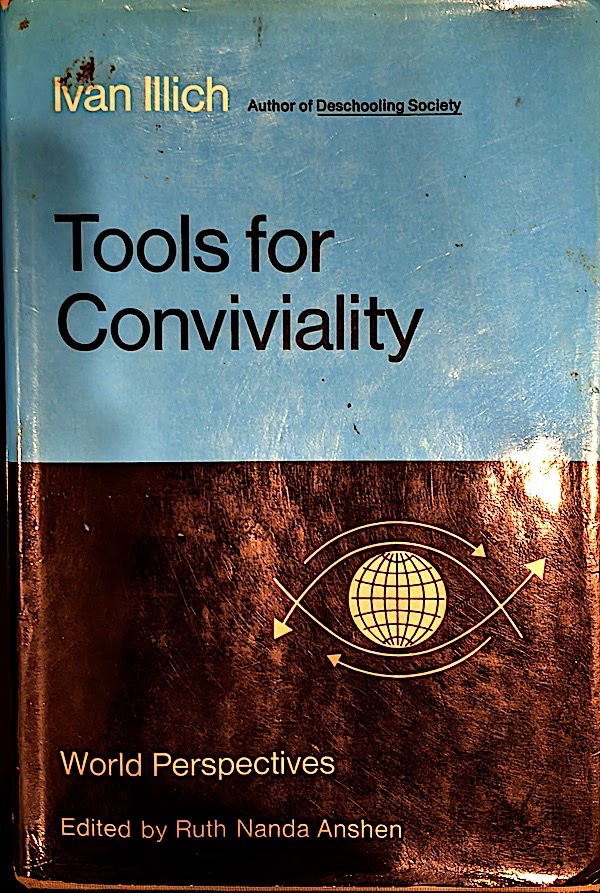
49. The Hitchhiker’s Guide to the Galaxy by Douglas Adams
Wodehousian moments of inspiration, optimistic nihilism, and longtermist galactic brain ideas. Still funny, if uneven.
Wodehousian moments of inspiration, optimistic nihilism, and longtermist galactic brain ideas. Still funny, if uneven.
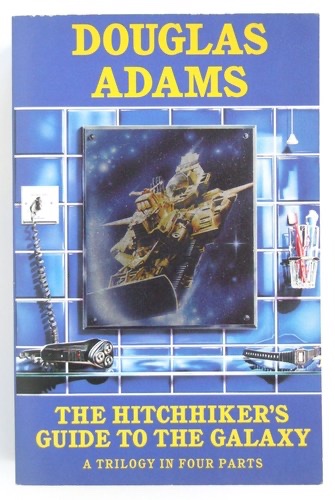
50. O Brother by John Niven
Gut punch of a book. How do you process the suicide of your brother? Niven teases out resonant moments from their upbringing and by the end of the book it feels resolved, artistically if not in life.
Gut punch of a book. How do you process the suicide of your brother? Niven teases out resonant moments from their upbringing and by the end of the book it feels resolved, artistically if not in life.

51. In Defense of Degrowth by Giorgos Kallis
I instinctively dislike the word degrowth, but can't think of a better word to describe a non-extractivist civilization. Convivial? Does feel like a random collection of articles of someone on the back foot. Whereas Hickel ...
I instinctively dislike the word degrowth, but can't think of a better word to describe a non-extractivist civilization. Convivial? Does feel like a random collection of articles of someone on the back foot. Whereas Hickel ...

52. The Yellow Paper (Edition 4) edited by Laura Haynes
A collection of writing from the latest crop of GSA's Art Writing MLitt students, as well as a poem from CAConrad. Lots of subtle, tender confessionals. I particularly enjoyed Kelcey Flaherty's short piece.
A collection of writing from the latest crop of GSA's Art Writing MLitt students, as well as a poem from CAConrad. Lots of subtle, tender confessionals. I particularly enjoyed Kelcey Flaherty's short piece.

53. Evolution of Desire: A Life of René Girard by Cynthia L. Haven
A reread to get some chronology facts in order for a piece I’m writing. This is a brilliant intro to a daunting figure. I particularly enjoyed the chapter on the ‘French Invasion’ of Lacan, Derrida etc in 1966.
A reread to get some chronology facts in order for a piece I’m writing. This is a brilliant intro to a daunting figure. I particularly enjoyed the chapter on the ‘French Invasion’ of Lacan, Derrida etc in 1966.

54. Less is More by Jason Hickel
A few years ago @GeorgeMonbiot called for new political narratives to help exit neoliberalism. @jasonhickel’s book provides just that. Lucid, purposeful, and empowering.
A few years ago @GeorgeMonbiot called for new political narratives to help exit neoliberalism. @jasonhickel’s book provides just that. Lucid, purposeful, and empowering.

55. Regarding the Pain of Others by Susan Sontag
Bought this from Michael who runs @GlasgowPhotoGal after having a nice chat about ethics in photography. It is feels chronologically off to read Sontag write about 9/11 but insightful on the impact and history of images of war.
Bought this from Michael who runs @GlasgowPhotoGal after having a nice chat about ethics in photography. It is feels chronologically off to read Sontag write about 9/11 but insightful on the impact and history of images of war.

56. Alasdair Gray: A Secretary's Biography By Rodge Glass
I read the chapters in reverse order, starting with the Gray I know and going back to the origins. Those latter chapters, when Glass was a witness, are the most lively and put one in awe of Gray’s achievements.
I read the chapters in reverse order, starting with the Gray I know and going back to the origins. Those latter chapters, when Glass was a witness, are the most lively and put one in awe of Gray’s achievements.

57. I Burn But I Am Not Consumed by Alicia Bruce
I like golf and am pretty YIMBY but even I found these photos of a community and ecosystem destroyed by a Trump golf course deeply melancholy. Beautifully produced hardback.
I like golf and am pretty YIMBY but even I found these photos of a community and ecosystem destroyed by a Trump golf course deeply melancholy. Beautifully produced hardback.

58. Stone Voices: The Search for Scotland by Neal Ascherson
As the SNP implode, it is instructive to read a deep history of the Scottish people in their land. From cup and ring carvings to the clearances, from imperial ambition to modern self-deprecation, it’s all here.
As the SNP implode, it is instructive to read a deep history of the Scottish people in their land. From cup and ring carvings to the clearances, from imperial ambition to modern self-deprecation, it’s all here.

59. Personal Delivery by Duncan McLaren
Published around the same time as Chris Kraus’s I Love Dick, this is a similarly pioneering work of autofictional art writing. Part diary, part correspondence, part review, it is a time capsule of the 90s Brit art scene.
Published around the same time as Chris Kraus’s I Love Dick, this is a similarly pioneering work of autofictional art writing. Part diary, part correspondence, part review, it is a time capsule of the 90s Brit art scene.

60. A Year with Swollen Appendices by Brian Eno
It’s 1995 and Eno is producing Bowie and U2, saving Bosnia, swimming naked with the horn, thinking about culture, and generally living the best life. Wonderful to revisit it with a new introduction.
It’s 1995 and Eno is producing Bowie and U2, saving Bosnia, swimming naked with the horn, thinking about culture, and generally living the best life. Wonderful to revisit it with a new introduction.

61. Kill Your Friends by John Niven
Spotify has free audiobooks now and I wanted to revisit this hilarious debut novel. It is part-Money, part-American Psycho, but grimmer than both. Not sure I can recommend to anyone in the current faint hearted climate.
Spotify has free audiobooks now and I wanted to revisit this hilarious debut novel. It is part-Money, part-American Psycho, but grimmer than both. Not sure I can recommend to anyone in the current faint hearted climate.

62. The Coming Bad Days by Sarah Bernstein
“Her prose is bare, her characters are depressed and alienated.” @char_stroud on the cool girl novelist and a good description of this. It is an almost plotless but full of aphoristic wisdom culled from people like Sebald and Celan.
“Her prose is bare, her characters are depressed and alienated.” @char_stroud on the cool girl novelist and a good description of this. It is an almost plotless but full of aphoristic wisdom culled from people like Sebald and Celan.

63. What Artists Wear by Charlie Porter
Fashion loves to appropriate from art and street culture, hose noble savages with the integrity that it lacks. The utopian sartorial future Porter finds is, alas, jeans, sweatpants, and workwear
Fashion loves to appropriate from art and street culture, hose noble savages with the integrity that it lacks. The utopian sartorial future Porter finds is, alas, jeans, sweatpants, and workwear
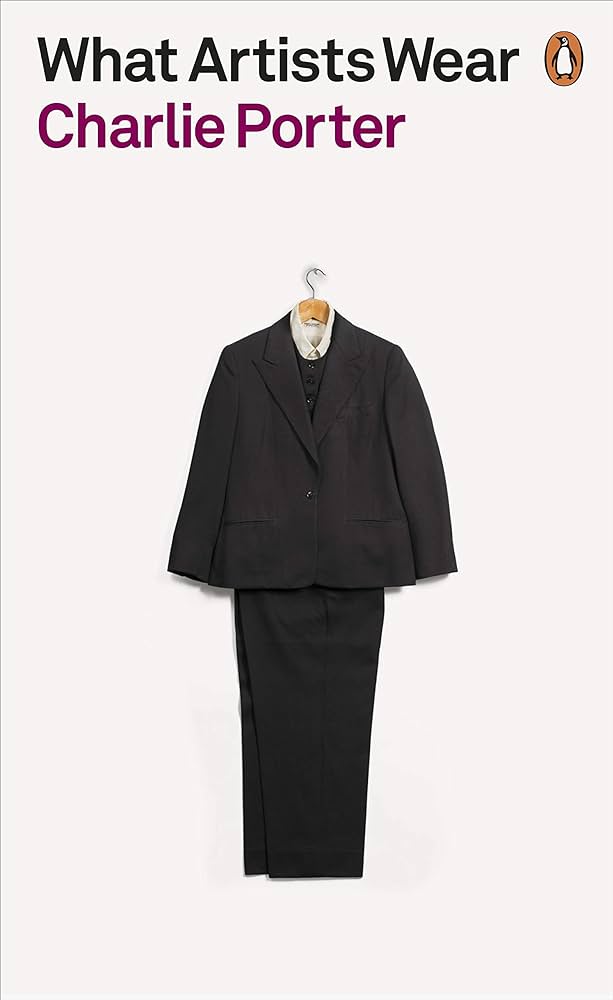
64. Modernism and the Occult by John Bramble
Recommended by @Heghoulian as I began researching occult influences in the arts. This is a comprehensive and illuminating survey, but sometimes ends up as long lists of names and doesn’t go much into the source material.
Recommended by @Heghoulian as I began researching occult influences in the arts. This is a comprehensive and illuminating survey, but sometimes ends up as long lists of names and doesn’t go much into the source material.

65. Psychogeography by Merlin Coverley
This breezy survey was published as psychogeography faded from view, killed by the smartphone and austerity maybe. Identifies two distinct traditions: English (Defoe, Sinclair) and French (Dada, Debord) with some channel-hoppers (Poe).
This breezy survey was published as psychogeography faded from view, killed by the smartphone and austerity maybe. Identifies two distinct traditions: English (Defoe, Sinclair) and French (Dada, Debord) with some channel-hoppers (Poe).

66. The World Behind the World By Erik Hoel
Substacker extraordinaire, Erik Hoel, who won the ACX book review competition last year, has converted his academic experience as a neuroscientist into a book about consciousness. It starts sprightly but deepens like a coastal shelf.
Substacker extraordinaire, Erik Hoel, who won the ACX book review competition last year, has converted his academic experience as a neuroscientist into a book about consciousness. It starts sprightly but deepens like a coastal shelf.

67. LOTE by Shola von Reinhold
Accomplished debut novel, highly recommended by @dickon_edwards, that tells a Black trans revisionist history of a Bright Young Thing. Worth reading if only for the transfixions.
Accomplished debut novel, highly recommended by @dickon_edwards, that tells a Black trans revisionist history of a Bright Young Thing. Worth reading if only for the transfixions.

68. Someday This Will Be Funny By Lynne Tillman
When I wrote about @C_JMK’s book a few weeks ago I had read little about her influence Lynne Tillman. This has been somewhat rectified by reading this collection of autofictional short pieces. Curious to read a full novel now.
When I wrote about @C_JMK’s book a few weeks ago I had read little about her influence Lynne Tillman. This has been somewhat rectified by reading this collection of autofictional short pieces. Curious to read a full novel now.
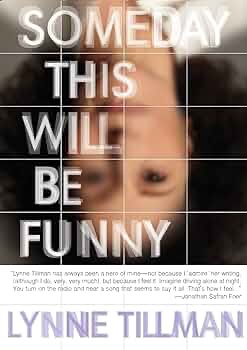
69. Accuser of Capitalism by John Maclean
Fascinating to learn more about this Clydeside socialist who was jailed for sedition during the first world war. His speech against war and prediction of more war are prescient and apt at this moment.
Fascinating to learn more about this Clydeside socialist who was jailed for sedition during the first world war. His speech against war and prediction of more war are prescient and apt at this moment.

70. Self-Made by Tara Isabella Burton
Modern non-fiction is so schematic. Every chapter is the same length, every thought the same weight. It’s an interesting book about dandyism but lacks sprezzatura.
Modern non-fiction is so schematic. Every chapter is the same length, every thought the same weight. It’s an interesting book about dandyism but lacks sprezzatura.

71. Alan Partridge: Big Beacon by Steve Coogan & the Gibbons
Audiobook listened on a long car journey. The prose is condensed comedy and there’s a lol every chapter. Read brilliantly by Coogan, I especially enjoyed the bits with Key and Gray in Qatar.
Audiobook listened on a long car journey. The prose is condensed comedy and there’s a lol every chapter. Read brilliantly by Coogan, I especially enjoyed the bits with Key and Gray in Qatar.
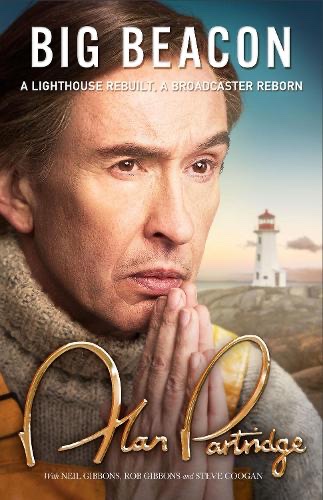
72. The Tao of Bowie by Mark Edwards
I am fascinated by Bowie’s use of the occult and wanted to learn more. This has a veneer of biography under which is a standard Buddhish self-help book, centred around Samye Ling tradition.
I am fascinated by Bowie’s use of the occult and wanted to learn more. This has a veneer of biography under which is a standard Buddhish self-help book, centred around Samye Ling tradition.

73. Prophet Song by Paul Lynch
I want to review this for @_fitzwilliam so will save my thoughts, but suffice it to say it would NOT be my choice for novel of the year.
I want to review this for @_fitzwilliam so will save my thoughts, but suffice it to say it would NOT be my choice for novel of the year.

74. Limbo by Dan Fox
Fox writes enviably well. His smooth, reference-packed sentences having been honed by years as editor of Frieze. This essay is good company but I wish that it had focused more on his six weeks on a container ship.
Fox writes enviably well. His smooth, reference-packed sentences having been honed by years as editor of Frieze. This essay is good company but I wish that it had focused more on his six weeks on a container ship.

75. Transient Light by Elaine Gallagher
Heartfelt, lucid poems about the traumas of transitioning, the experience of working in a nuclear submarine base and more.
Heartfelt, lucid poems about the traumas of transitioning, the experience of working in a nuclear submarine base and more.

76. Howards End by E.M. Forster
Extraordinary novel, prescient and exact, about class and the problem of England. Bohemians, imperialists and the precarious mix together bound by Forster's vision.
Extraordinary novel, prescient and exact, about class and the problem of England. Bohemians, imperialists and the precarious mix together bound by Forster's vision.

• • •
Missing some Tweet in this thread? You can try to
force a refresh















